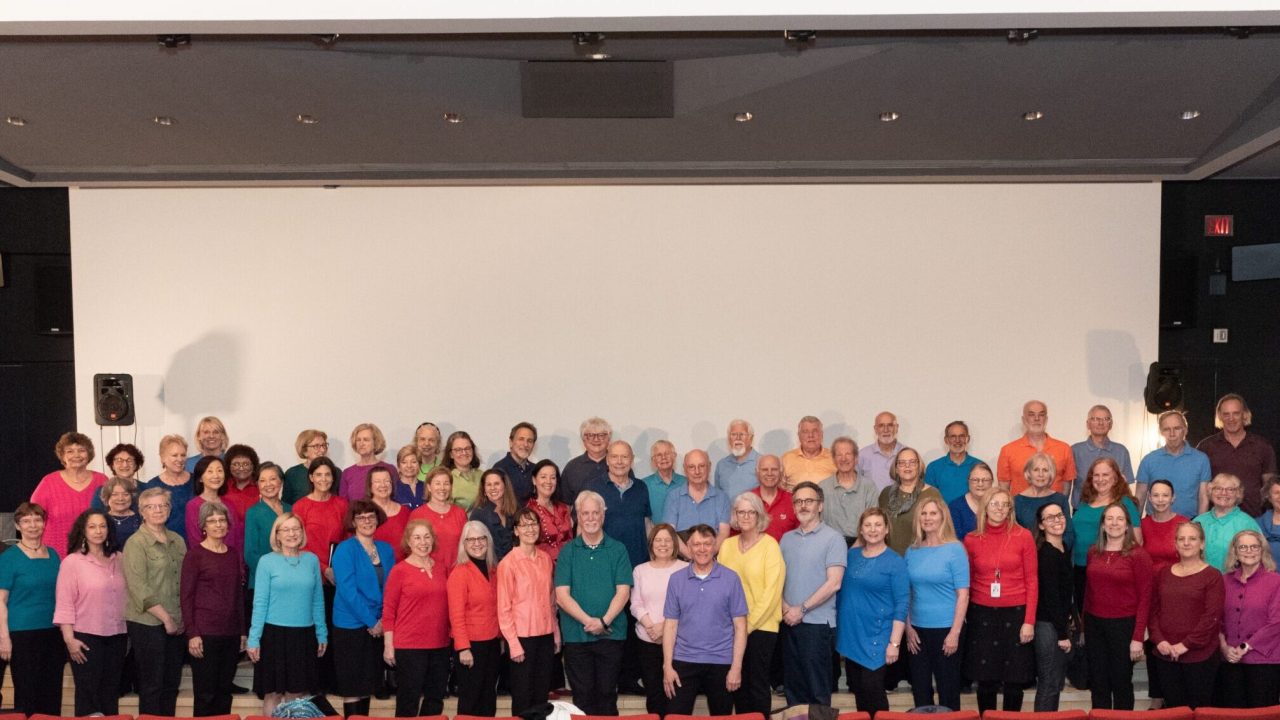
In 2019, Smithsonian Associates—the largest museum-based education program in the world—had the opportunity to launch a popular music program designed for those fifty-five and older thanks to a Seeding Vitality Arts in Museums grant from Aroha Philanthropies.
Three sessions of the program, the Smithsonian Boomers’ Chorus, were held from April 2019 to March 2020, each with a different theme, such as “Legends of Song” or “Rock and Roll.” All sessions included eight weeks of rehearsal and a culminating event or “informance” (informal + performance).
Teaching Artist/Conductor Ernest Johnson selected the songs—with some input from the chorus—and each rehearsal consisted of vocal warm-ups, basic music reading instruction, sing-a-longs, and finally learning the songs line by line. Additional icebreaker games gave the group the opportunity to get to know each other.
The response to the chorus has been overwhelmingly positive. Many participants loved the opportunity to be in a non-audition chorus and looked forward to getting together each week. Over the three sessions, the chorus grew from seventy to ninety participants, with several returning for additional sessions and recommending the program to their friends, family, and community.
On March 10, 2020, the final “informance” took place, and by the end of that week the Washington, DC, area and most of the country had begun to shut down due to the pandemic. The March 2020 event was recorded to capture the moment—a decision we were grateful for later, as we didn’t realize it would be our last in-person session.
Although the April 2020 session had to be cancelled, participants were offered an optional weekly email from Ernest with breathing exercises and vocal exercises that they could do on their own. And in June, a Zoom meeting was held for those participants to meet, catch up, and gauge their interest in what Smithsonian Associates could offer in lieu of a chorus via Zoom.
The outcome was a pivot to a virtual “Introduction to Music Theory” course capped at fifteen participants. Ernest also offered online “office hours” for some additional one-on-one time. One participant remarked after taking the course, “We now see a language in looking at the music we didn’t see before.” The course has been offered twice and will be offered in the fall in both introductory and advanced formats.
We are so lucky to have Ernest on board. He has over forty years of teaching experience, and his willingness to adapt to teaching virtually has been remarkable. Not to mention, his ability to create a virtual music theory class for novices has further increased our respect for his talent.
Challenges we faced with the new format included making sure participants had and understood the technology needed to enjoy the class. Software needs ranged from digital piano apps to sight-reading websites, and offering different options to participants was helpful. Some used a song composition website that allowed them to share their song directly with the instructor, while others preferred pencil and paper and emailing a photo of their composition to receive feedback. Ernest would record himself playing the composition and share that with the participant via email and/or during class. We also mailed a textbook to each participant to use during class (and keep afterwards).
While Smithsonian Associates offers programs of all kinds for all ages, it’s been extremely rewarding working on creative aging programs. We’re proud of what we’ve developed over the past two years, and it’s been a joy to see people join us week after week ready to sing and have fun together.
For anyone interested in developing creative aging programs to serve the older adult audience in their community, we can offer this advice:
- Have a great team who understands your audience and is willing to work with unforeseen circumstances.
- Be flexible and adaptable. Some older audiences are eager to participate but have outstanding needs that modifications must be created.
- Be ready to be amazed by everyone’s willingness and their outcomes.
Then prepare to be surprised, uplifted, and encouraged. We’ve seen participants in our programs determined to keep singing, despite difficulties getting a parking spot downtown, health scares, and even one participant in the advanced stages of Alzheimer’s. This participant joined us for as long as she was able, because she loved singing and being part of a community of people who also loved to sing. May we all be fortunate enough to witness moments of determination like that.
About Smithsonian Associates
For over fifty-five years, Smithsonian Associates has produced vibrant educational and cultural programming that brings the Smithsonian to life. Inspired by the Smithsonian’s research, collections and exhibitions, nearly one thousand public programs spark creativity and excite learning in people of all ages each year.







